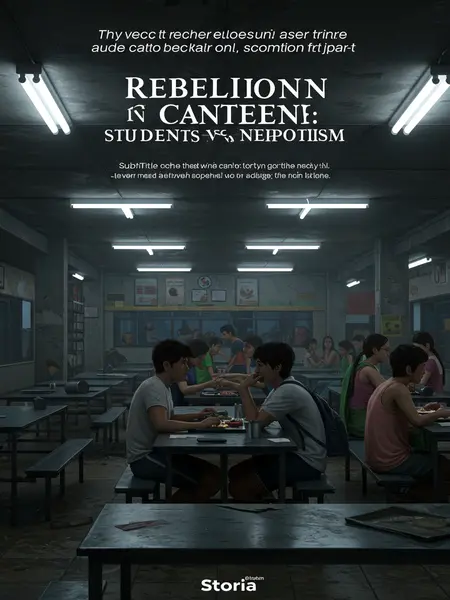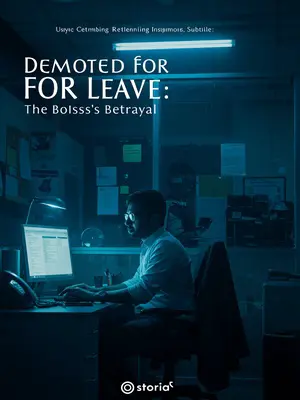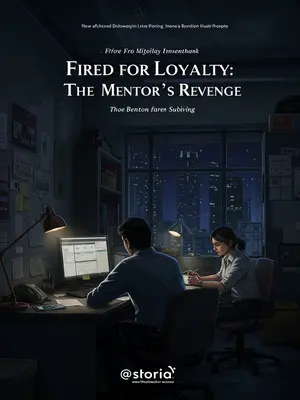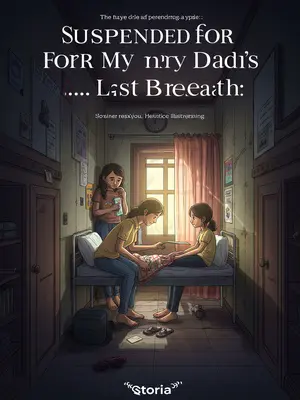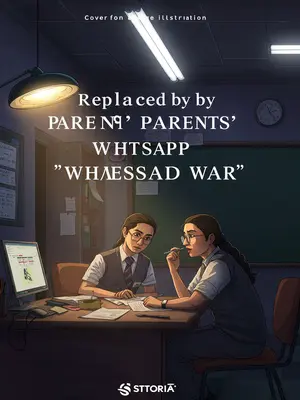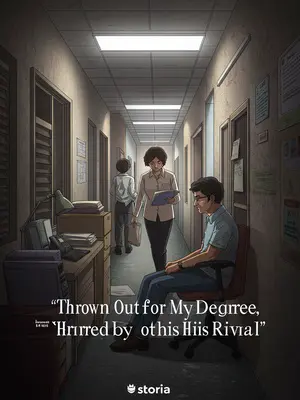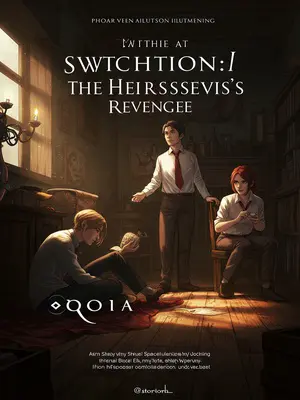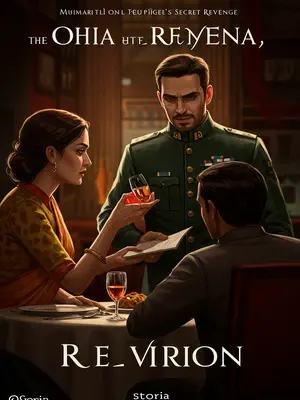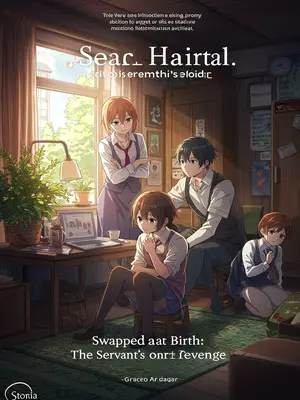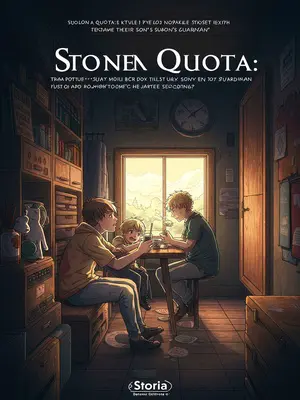Chapter 2: Survival of the Fittest
There’s only one difference between my high school canteen food and gobar: the canteen charges money for theirs. Even thinking of it now, my stomach flips. I’ve seen better stuff thrown out at highway dhabas. Sometimes I wonder if canteen uncle is running some weird experiment on us.
If you threw it to a dog, even the dog would turn up its nose: ‘A gentleman would rather die than be humiliated. Better to be shattered to pieces than lose his good name.’ No joke—the stray dogs at the school gate sniff our leftovers, then walk away, noses high, like, “We have standards, bhai!”
But what even dogs won’t eat, they serve to us. Sometimes I think we’re lower than the street dogs in canteen uncle’s eyes. If I see him in the bazaar, I swear I’ll throw a meatball at his scooter.
Meatballs made entirely of fat, eight rupees a pop. No exaggeration—bite into one, and you’re left smacking your lips just to get rid of the oily layer. My friend Akhil says eating one is like chewing an eraser dipped in Vanaspati ghee.
Frozen chicken legs as old as my great-grandmother. If I don’t touch the plate to my forehead before eating, the aunties scold me for not respecting my elders. “Beta, respect karo!” they say, shoving the ancient leg onto my plate. I’d rather touch my dadi’s feet than eat that chicken.
If you cook those chicken legs with eggs, who knows which pressure cooker will reunite the great-grandmother chicken and her great-great-grandchild egg—eight generations coming together in one stew. The canteen kitchen is a true Indian melting pot—sometimes literally. When the cook is in a mood, everything goes into one degchi, and you wonder if he’s writing a family saga with every meal.
Don’t be fooled by the ‘special mutton curry’ sign on Fridays. It’s mostly goat hooves—more bone than meat, and sometimes, a surprise hoof if you’re lucky. Swati once joked we should make keychains out of them.
There I was, picking through the curry, and suddenly I’m flashing back to when Ma fed me goat-milk formula. Even that was tastier than this school food.
I’m really not picky. When I was small, Ma was on a business trip, and Papa brought home cattle feed, calling it Swiss muesli. I ate it with milk, even asked for seconds. Mummy still laughs about it at family gatherings.
I ate it for over half a month without a complaint. No stomach upset—my tolerance is legendary. Like a true Indian kid, I’ve survived everything from tiffin-box sambhar to street-side momos with mystery fillings.
I’m not saying this to prove my father doesn’t treat me like a person, but to show my tolerance is stronger than a goat’s. At least goats get to choose what they chew. We just pray before lunch.
But cucumber stir-fried with chakli, dragon fruit stewed with boiled egg—these dishes, even a goat would rebel. Once, they served us a dish that looked like Independence Day—orange carrot, white egg, green beans, all floating in oil. My friend said, “Bro, even my goat back home would riot if I gave him this.”
Akhil swears his uncle’s goat once broke out of its pen rather than eat stale roti. Here, even the hostellers dream of rebellion every lunch hour.
I used to think the canteen chef’s dream was to be a magician. Who else could turn normal ingredients into something unrecognisable? “For my next trick: gajar halwa with curry leaves!” It’s as if he plays antakshari with the menu—carrot plus chilli, chilli plus soya chunks, soya plus kheer. Kya logic hai?
Later, I found out all these dishes were expired waste from the food factory next door, stuff they had to get rid of. A friend whose uncle works in the municipality swears the canteen gets a ‘special discount’ on factory rejects. Maybe the chef is doing seva for the local kachra mafia.
A pot of everything, survival of the fittest, natural selection—the canteen’s law of the jungle. Eat at your own risk. If you survive lunch, congratulations—you’ve evolved.
How do I know? Arrey, I once ate a price tag sticker. Yes, really. I bit into a vada and pulled out a half-chewed MRP sticker. Still better than the day I found a band-aid in my daal.
And then there’s the free sambar, staple of every canteen. Every day, they ladle out sambar so watery it could pass for river water. Still, if you say no, the lunch lady scolds you: “Beta, don’t waste, so many children are hungry in India!”
The blackboard says today’s soup is tomato rasam and egg drop, with little chalk drawings of tomatoes and eggs. But that’s just for show. When you peer into the pot, it’s a bubbling, brownish mystery. Stare long enough, and it stares back.
One time, the sambar pot winked at me. My friend said, “If you look long enough, the sambar looks back into you.” Maybe they got technical guidance from an instant noodles factory—same odd synthetic tang. And just like instant noodles, the egg floats there forever, refusing to disappear. One egg lasts through three generations—people come and go, the egg remains.
Finally, in a hidden corner, I spot a wisp of coriander. I fish it out—hahaha, it’s bloody hair. The horror! Appetite gone in a second. My friend patted my back: “Added protein, bro.”
Maybe the school has its reasons. Maybe this is all a test—if you can survive this food, you can survive anything. Now, whenever I find a foreign object in my veggies, I can tell what it is just by touch. Fingers trained like a blind man’s. Senses sharper than CID officers.
If it’s soft and springy, it’s a worm. If it’s hard, steel wire. Poky: toothpick. Squishy: spit it out, no questions. Once I bit into something rough and grainy. My jaw froze. I called Akhil over—food detective at work. We put it on the table, poked it with pencils like lab scientists. Maybe it’s a bean pod, maybe a cockroach egg. Nobody wanted to smell it, so we left it for the biology teacher. Swati said, “Maybe we’ll get bonus marks for fieldwork!”
Forget textbooks—we’re getting practical knowledge every day. My parents say school is for all-round development. Well, mission accomplished. Some schools have Olympiad toppers; we have food item mystery solvers. Proud moment. If I’d been born a few centuries earlier, I’d have co-authored ‘Unseen Creatures of School Canteens.’ Even the Birdman of India would’ve run away after seeing our sambar. What’s a sparrow compared to our curry’s floating wildlife?
